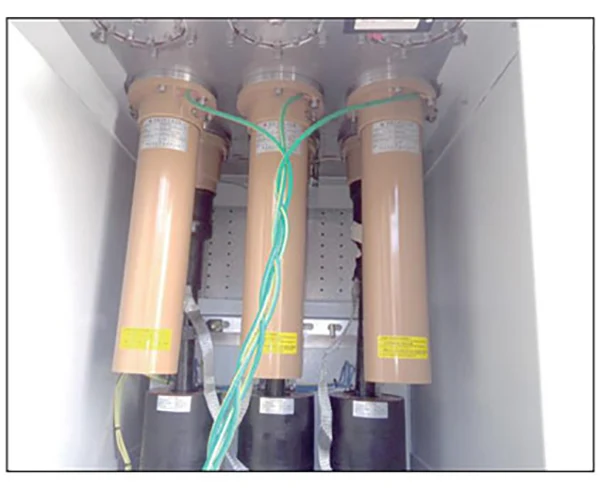40.5KV 630A Sf6 Sulfur Hexafluoride Filled Gas Insulated Switchgear
In recent years, with the advancement of technology and the growth of society and the economy, engineering construction has become increasingly intricate. There is a rising demand for compact switchgear that is low-maintenance and smart. Both local and global switch manufacturers are currently engaged in the development of 40.5KV 630A Sf6 Sulfur Hexafluoride Filled Gas Insulated Switchgear, which are also referred to as gas-insulated switchgear (C-GIS). This type of switchgear houses high-voltage elements like busbars, circuit breakers, isolating switches, and power cables in a container with reduced gas pressure.
Model:40.5KV 630A inflatable cabinet
Send Inquiry
Product Features
1. By utilizing sulfur hexafluoride gas as a shielding and arc extinguishing tool, the dimension of the switchgear can be substantially minimized, resulting in a more portable and smaller layout.
2. The conductive part of the major circuit, which is extremely trusted and secure, is sealed in SF6 gas, keeping the high-voltage real-time conductor enclosed and untouched by external factors. This makes certain long-lasting secure procedure and high reliability of the tools.
3. There is no risk of electrical shock or fire.
4. The 40.5KV 630A Sf6 Sulfur Hexafluoride Filled Gas Insulated Switchgear is created with an independent modular framework, with the air box constructed from high-precision light weight aluminum plate and can be taken apart. The seclusion switch adopts a direct transmission with three settings. To minimize control relay and circuit complication, an extra control component with nearly 100 PLC points is included for grounding, isolation switch, and remote operations. The device button is modular, linking opening and closing points with plum blossom contacts. This eliminates the opportunity of non-operation in the initial rotating seclusion button and basing button, settles the problem of unstable and too much get in touch with resistance in the initial rotary seclusion switch, and includes securing and voltage equalization covers on each contact's exterior to resolve partial discharge troubles during switch breakpoints manufacturing.
5. The gas-insulated switchgear is convenient to use and arrange. It can be made use of as an independent system and meet various main wiring needs via combination. Providing it to the website as devices can reduce on-site installation and boost reliability.
Execution standards
IEC 62271-200: 2011 High-voltage switchgear and controlgear - Part 200: AC metal-enclosed switchgear and controlgear for rated voltages above 1 kV and up to and including 52 kV
IEC 62271-102:2013 6.2 High-voltage switchgear and controlgear - Part 102: Alternating current disconnectors and earthing switches
IEC 62271-100: 2017.6.2 High-voltage switchgear and controlgear - Part 100: Alternating-current circuit-breakers
GB/T11022-1999 Common technical requirements for high-voltage switchgear and control equipment standards
GB3906-2006 3.6kV~40.5kV AC Metal Enclosed Switchgear and Control Equipment
GB311.1-1997 Insulation Coordination of High Voltage Transmission and Transformation Equipment
GB/T16927.1-1997 High voltage testing technology Part: General test requirements
GB/T16927.2-1997 High voltage testing techniques Part 2: Measurement systems
GB/T7354-2003 Partial discharge measurement
GB1984-1989 AC High Voltage Circuit Breakers
GB3309-1989 Mechanical tests of high-voltage switchgear at room temperature
GB4208-2008 Code for Degree of Protection Provided by Enclosures (IP)
GB12022-2006 Industrial sulfur hexafluoride
GB8905-1988 Guidelines for gas management and inspection in sulfur hexafluoride electrical equipment
GB11023-1989 Test method for sulfur hexafluoride gas sealing of high-voltage switchgear
GB/T13384-1992 General technical requirements for packaging of electromechanical products
GB4207-2003 Solid insulation materials - Determination of relative and resistance to electrical trace index under humid conditions
GB/T14598.3-2006 Electrical relays - Part 5: Insulation of electrical relays
GB/T17626.2-1998 Electromagnetic Compatibility Testing and Measurement Techniques - Electrostatic Discharge Reactance Interference Test
GB/T17626.4-2008 Electromagnetic Compatibility Testing and Measurement Techniques - Electrical Fast Transient Pulse Group Immunity Test
GB/T17626.5-2008 Electromagnetic Compatibility Testing and Measurement Techniques - Surge (Impulse) Immunity Test
GB/T17626.12-1998 Electromagnetic Compatibility Testing and Measurement Techniques - Oscillating Wave Immunity Test
Test Type
◆ Insulation test
◆ Temperature rise test
◆ Loop resistance measurement
◆ Short-time withstand current and peak withstand current tests.
◆ Verification of making and breaking capabilities
◆ Mechanical operation and mechanical characteristic testing tests
◆ Protection level detection
◆ Additional tests on auxiliary and control circuits
◆ Pressure tolerance test for inflatable compartments
◆ Sealing test
◆ Internal arc test
◆ Electromagnetic compatibility test
Basic Scheme
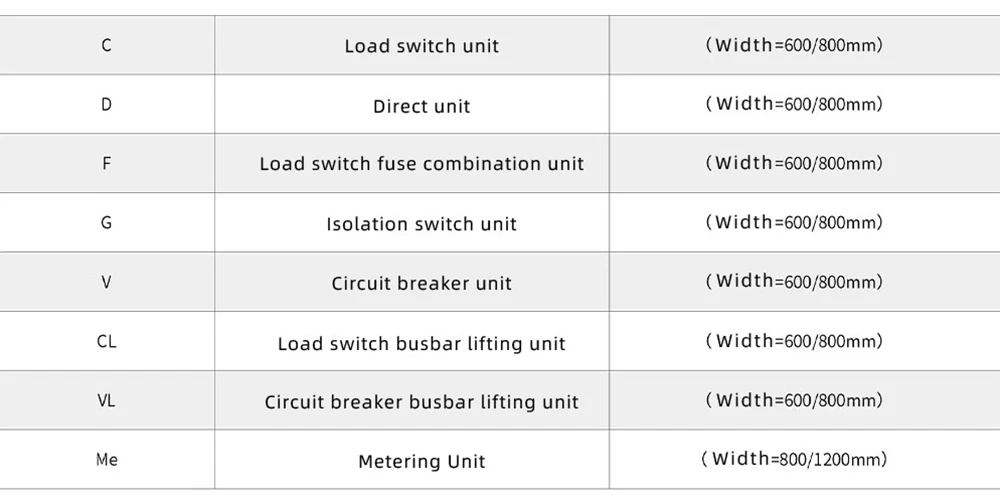

Operation Condition

Technical Parameter
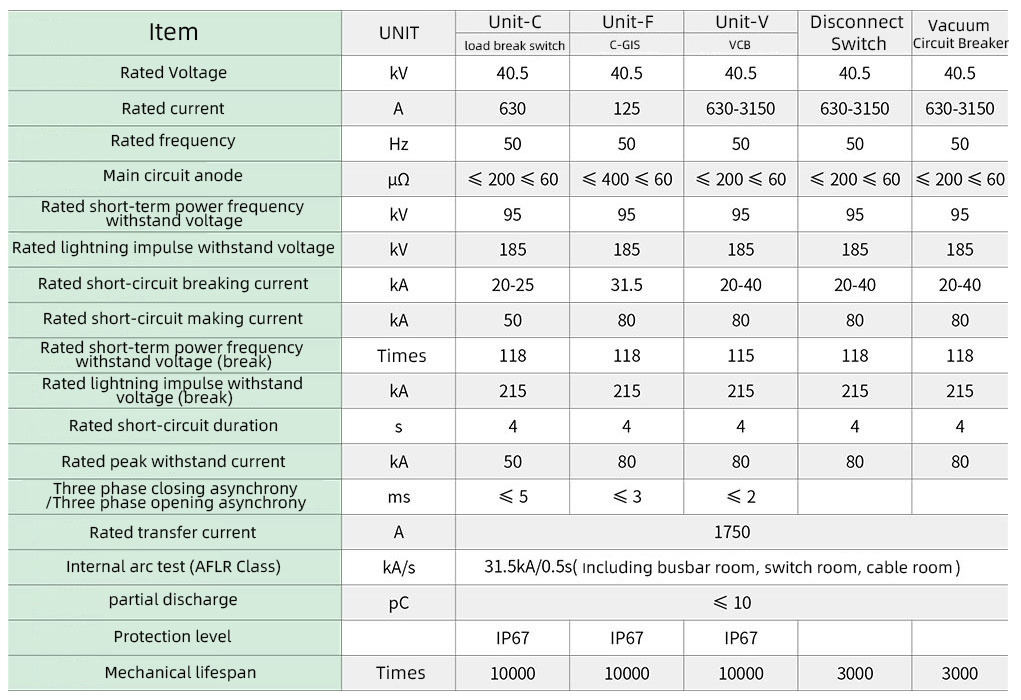
Grounding and Separation
The C-GIS 40.5KV 630A Sf6 Sulfur Hexafluoride Filled Gas Insulated Switchgear is available in a range of current capacities, including 630A, 1250A, 1600A, 2000A, 2500A, 3150A, and more. The cabinet's size can be tailored to meet specific requirements. The exterior is made from aluminum zinc-coated plates, while the gas box is constructed using high-quality 304 stainless steel plates. The units can be expanded and combined independently according to the design plan. The cabinet is divided into several rooms, including a secondary control room, busbar room, circuit breaker room, circuit breaker operating mechanism room, and cable room. The cable connection height reaches up to 700mm, facilitating maintenance and installation. The cabinet also features a comprehensive grounding protection system. The switchgear consists of separate functional compartments, such as switch rooms, busbar rooms, cable rooms, and secondary circuit channels. Each functional compartment is separated by a grounding metal partition and operates independently.
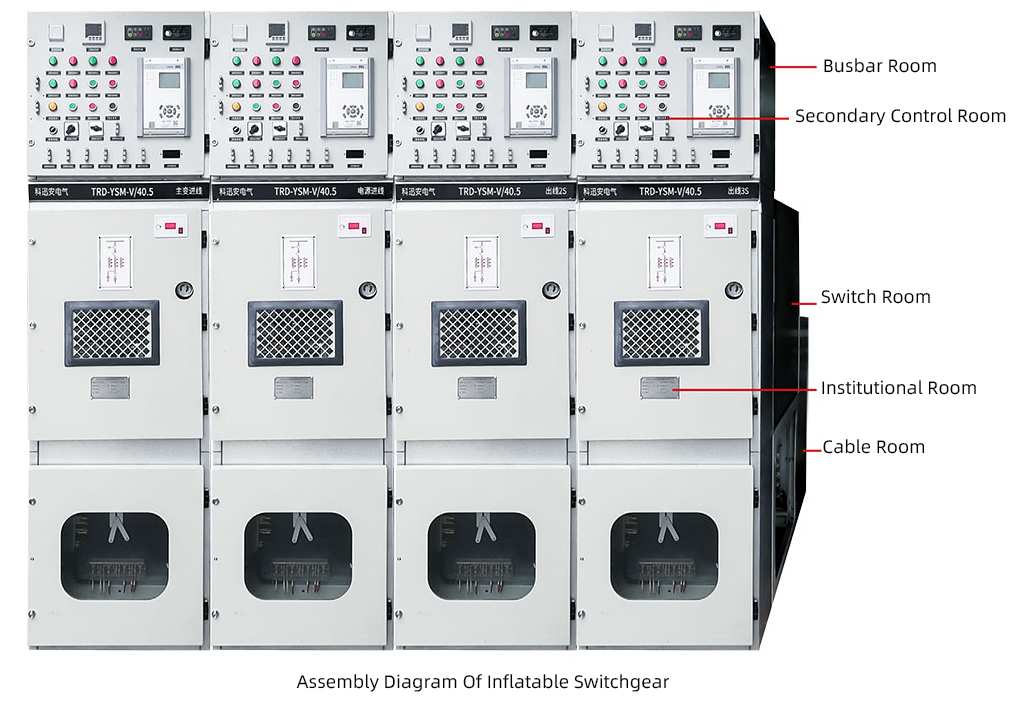
Secondary control room
The cabinet is situated beneath the secondary control room, which features boards for mounting components and brackets for securing terminal blocks. This room allows for the installation of various devices, such as wiring terminals, small busbar terminals, and comprehensive protection devices, enabling the system to perform remote control, telemetry, remote signaling, and local monitoring functions. The cabinet can be easily connected to small busbars via circular holes on the left and right side panels and terminals.
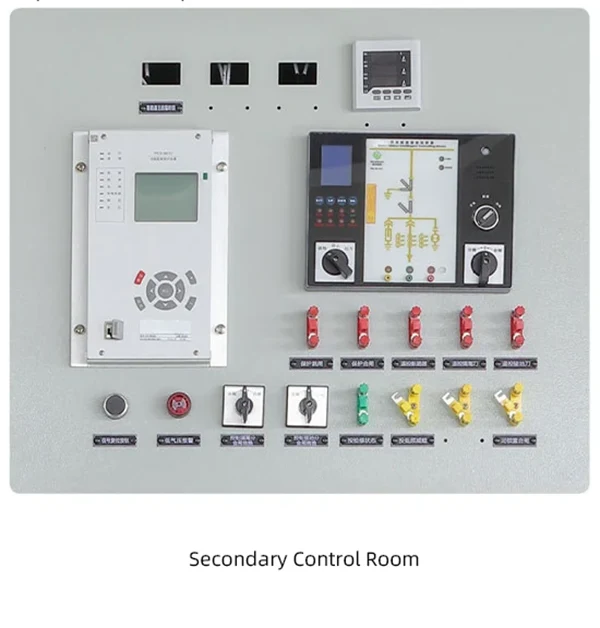
Busbar Compartment
The housing for the upper air containment system includes the busbar chamber and the isolation system. The connection between the circuit cabinets and busbars on either side is stabilized through cabinet merging after the cabinet has been placed on the ground support.

Switch Room
The 40.5KV 630A Sf6 Sulfur Hexafluoride Filled Gas Insulated Switchgear features a tiered design with two compartments stacked vertically in the middle. The top compartment houses a three-position isolation switch, while the bottom compartment contains a vacuum circuit breaker. The busbar, isolation switch, and circuit breaker are positioned in a vertical alignment. While the single-compartment structure is straightforward, cost-effective, and simple to produce, it may have reduced reliability due to the components being in close proximity. Conversely, the multi-compartment design offers increased safety by preventing interference among components and facilitating easy replacement. However, this option is more intricate, costly, and challenging to manufacture.

Institutional Room
The spring-based system is positioned in a horizontal plane, with the isolation and circuit breaker mechanisms functioning independently of each other. The system is designed to work in conjunction with the insulation rod of the vacuum arc extinguishing chamber, streamlining the transmission process. As a result, the mechanism's output features are better suited to the circuit breaker's opening and closing capabilities, leading to reduced energy consumption, improved mechanical reliability, and increased flexibility.
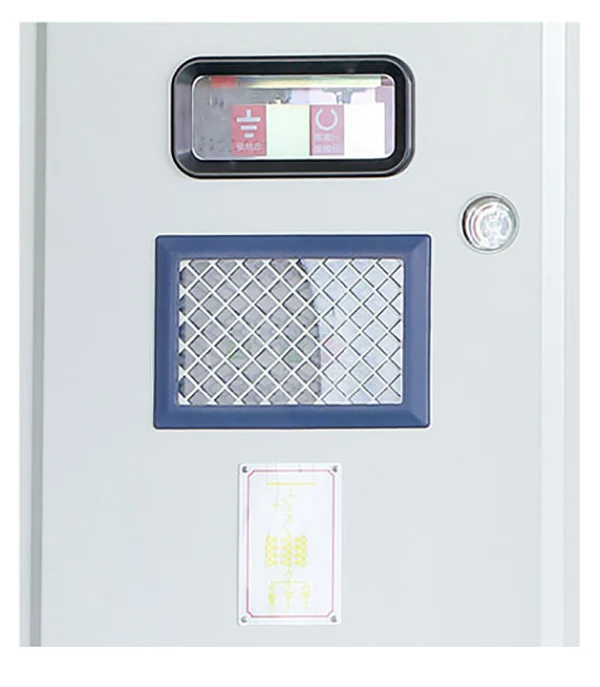
Cable Room
The cabinet is positioned above the cable room, boasting a distinct pressure relief pathway. The space between the ground and the cable connection terminals can reach a height of 700mm. In accordance with regulations, grounding interlocks are integrated into the cable room, enabling the installation of two cables and lightning arresters in each circuit. Additionally, the internal cone insertion method secures the connection between the incoming and outgoing cables and lightning arresters.
